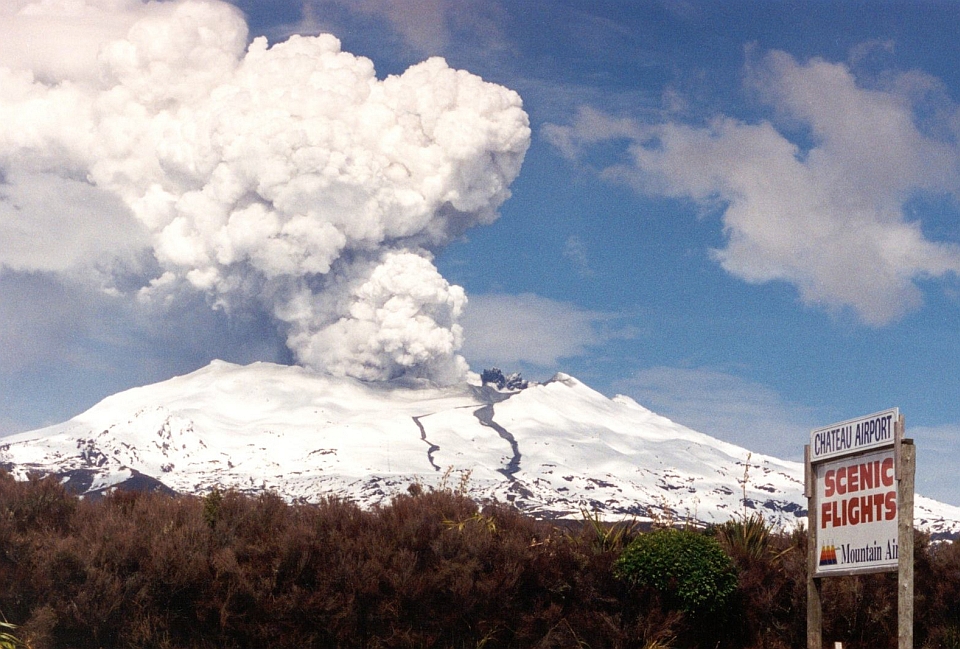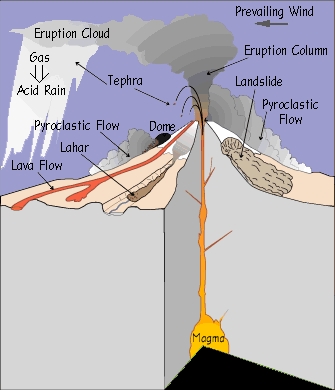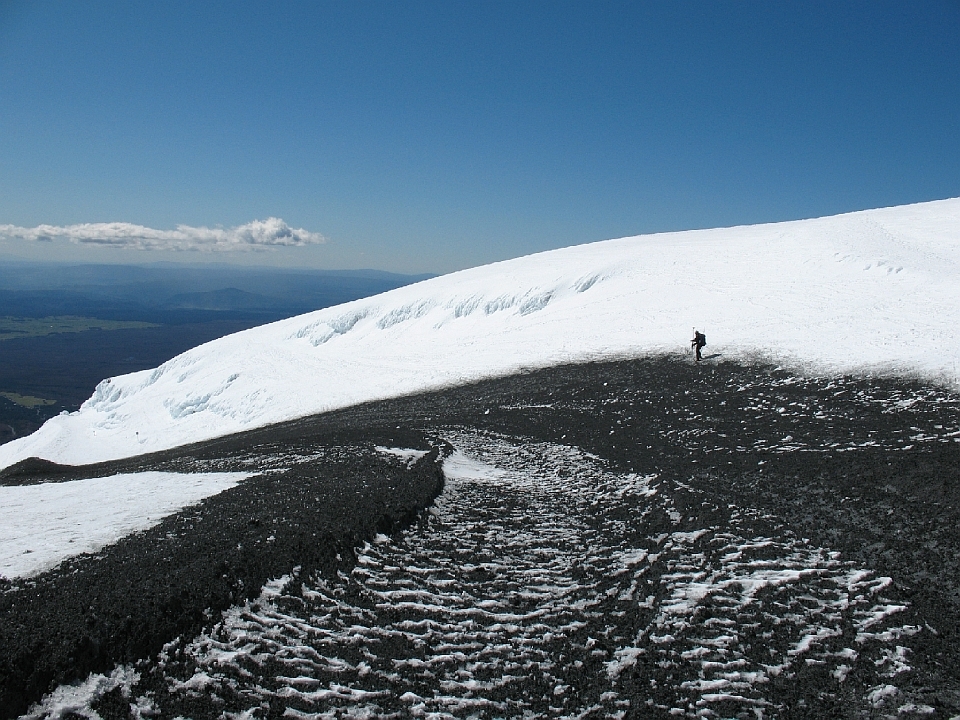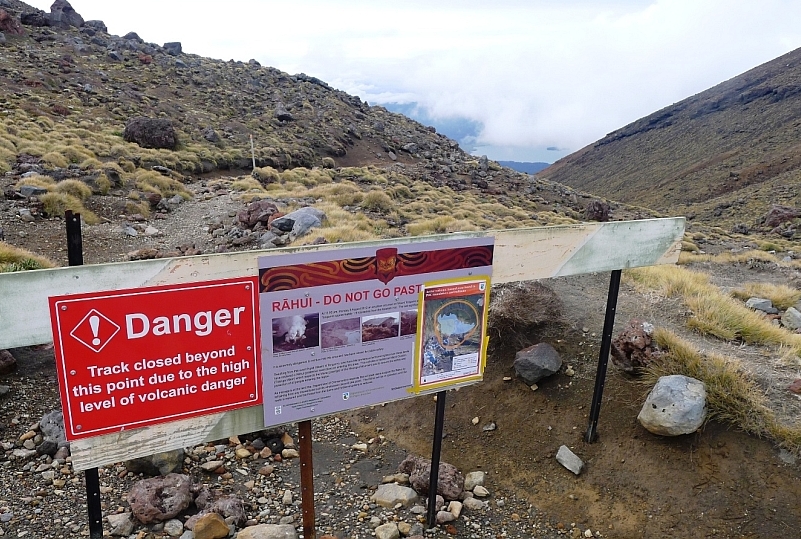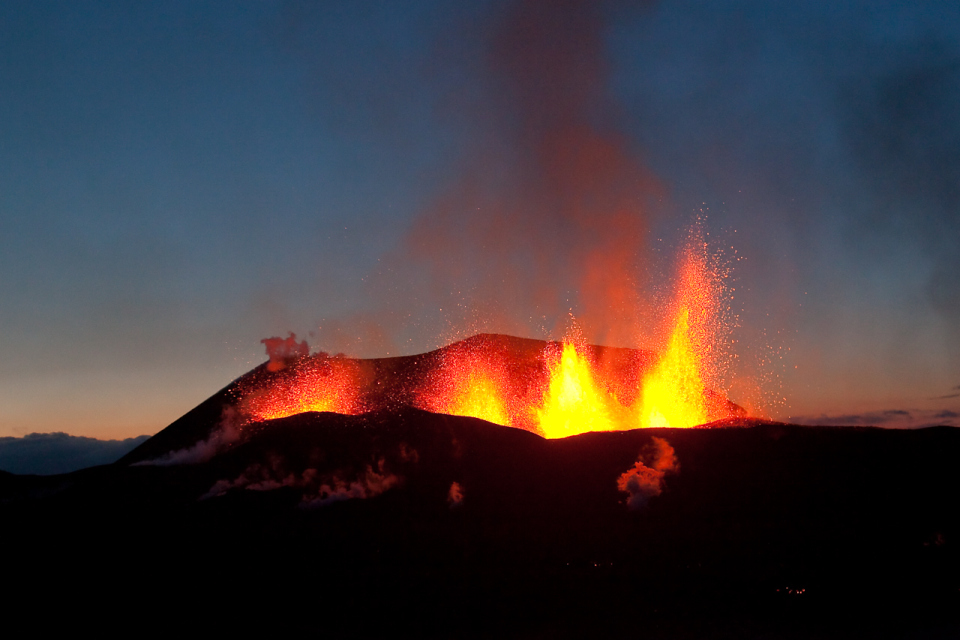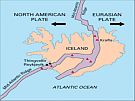Volcanic eruptions can cause many different hazards and these hazards can happen at the same time. The type of hazard depends on the type of volcano and the type of eruption.
Ash Fall
When a volcano erupts it will push material into the air above. Large material, such as rocks, will land close to the vent. But, fine material like ash is carried a long way. The impact of ash fall on people and the environment depends on how thick the layer of ash is. Ash fall usually affects a large area.
Lightning ash clouds can form powerful electrical fields with lightning. This lightning can disrupt radio communications, damage electrical devices, or start fires in buildings.
Pyroclastic flows and surges
If a large amount of volcanic material erupts quickly from a volcano the eruption column can fall downwards in a landslide of hot, fast moving gas and rock. This is called a pyroclastic flow or surge. These flows often travel at speeds up to 200km/h, and cause total destruction of the areas they cover.
Flows may be very hot and can start fires. Some are cooler and can drop sticky wet mud. Pyroclastic flows are the most damaging of all volcanic activity. People caught in the path of a flow are not likely to survive.
Lava flows
Lava flows are streams of melted rock that travel down the sides of volcanoes. Some types of lava flow easily and can travel a long way but usually lava only flows about 5-10 kilometres from the volcano.
Lava flows are not often a threat to people's lives because they move slowly. But, lava flows will destroy buildings and other things in their path.
Lahars
Lahars are “mudflows”- mixtures of volcanic ash, rocks and water that are formed on volcanoes. The source of a lahar may be a crater lake, a dam collapse or heavy rainfall washing ash from the slope of a volcano. Lahars are common with volcanoes like Ruapehu, which has a crater lake.
Volcanic gases
Volcanic gases are mainly made up of steam (water), followed by carbon dioxide and small amounts of sulfur and chlorine. Harmful levels of gases are only found very close to the crater (within 1-2km). Away from the vent, gases are no threat.
Landslides
Many volcanic cones are steep sided and unstable. Rising magma, earthquakes, and heavy rain can trigger landslides. These landslides may keep flowing down a slope as a lahar.
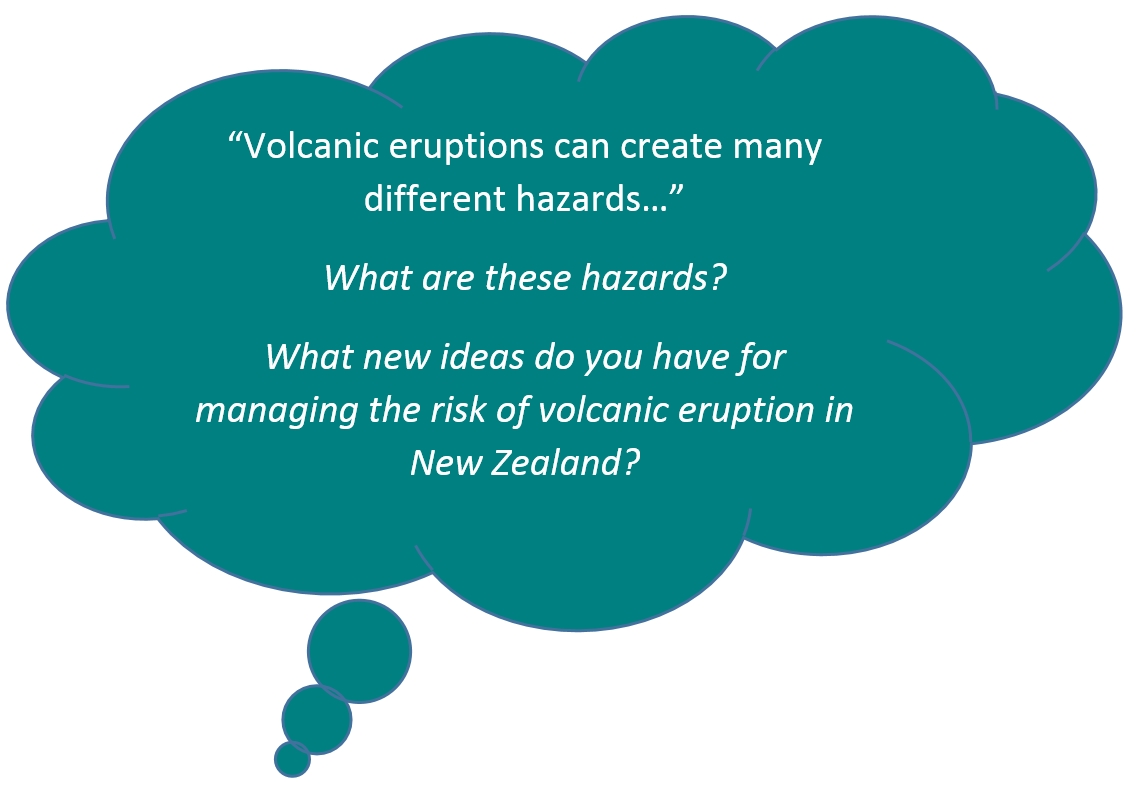 Volcanic tsunami
Volcanic tsunami
Tsunamis are sea waves caused by large movements on the sea floor. They can be made by:
- seafloor earthquakes
- landslides
- underwater volcanic eruptions
A number of waves may form and they may travel a long way. Volcanic tsunami may also start from landslides flowing into the sea around an island volcano.
Hydrothermal eruptions
Earthquake or volcanic activity can cause a drop in the pressure of a geothermal system, this causes eruptions of steam. These eruptions only affect the area close to a vent.
Ready for a quiz? Try the 'Volcanic Hazards' interactive activity.

